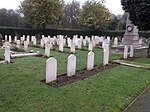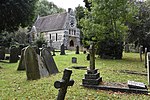Richmond Park (UK Parliament constituency)
1997 establishments in EnglandConstituencies of the Parliament of the United Kingdom established in 1997Parliamentary constituencies in LondonPolitics of the London Borough of Richmond upon ThamesUse British English from December 2016

Richmond Park is a constituency in Greater London represented in the House of Commons of the UK Parliament. Since 2019, its Member of Parliament (MP) has been Sarah Olney of the Liberal Democrats. Previously held by Zac Goldsmith of the Conservative Party from 2010, Goldsmith stood down in 2016 in protest over expansion of Heathrow Airport. Olney won the seat at the resulting by-election, defeating Goldsmith who was then standing as an independent. Goldsmith subsequently regained the Conservative nomination and the seat in the 2017 general election, before losing to Olney a second time at the 2019 general election.
Excerpt from the Wikipedia article Richmond Park (UK Parliament constituency) (License: CC BY-SA 3.0, Authors, Images).Richmond Park (UK Parliament constituency)
Queen's Ride, London Petersham (London Borough of Richmond upon Thames)
Geographical coordinates (GPS) Address Nearby Places Show on map
Geographical coordinates (GPS)
| Latitude | Longitude |
|---|---|
| N 51.447 ° | E -0.278 ° |
Address
Queen's Ride
Queen's Ride
TW10 5HR London, Petersham (London Borough of Richmond upon Thames)
England, United Kingdom
Open on Google Maps









